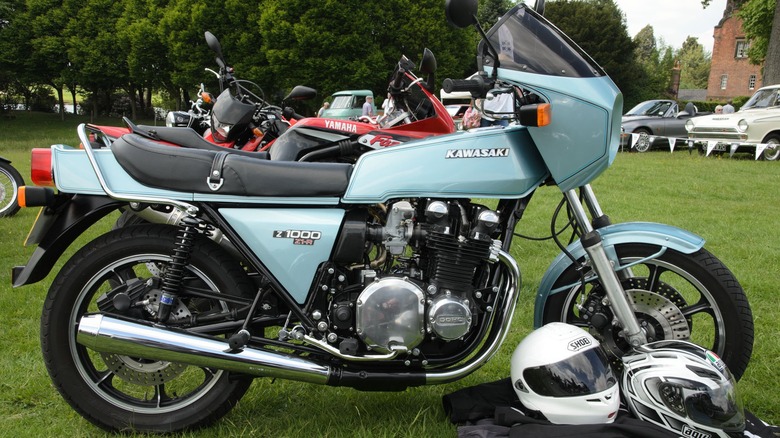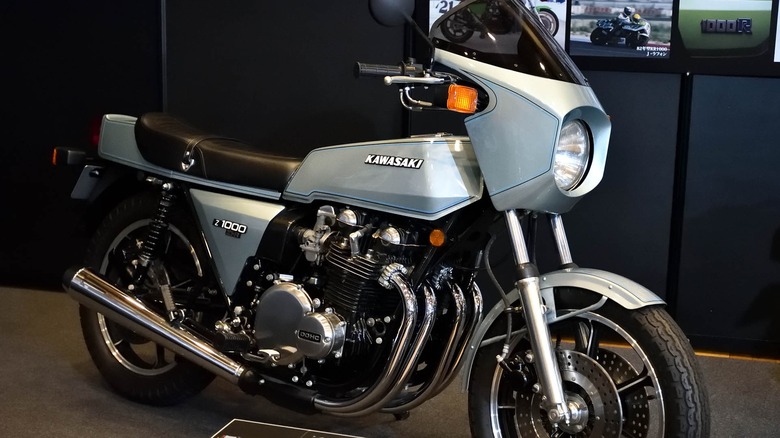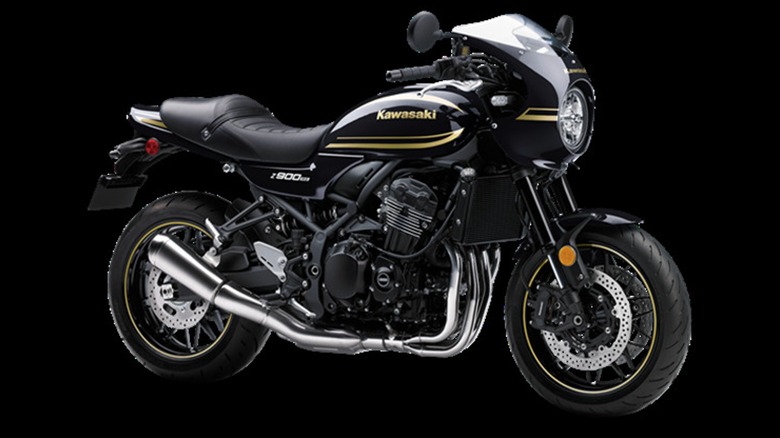Here's What Made The 1978 Kawasaki Z1-R So Unique From Other Motorcycles
The human obsession with motorcycles began in 1885, about a decade after the invention of the four-stroke Otto Cycle engine that still powers most models. Kawasaki made its first motorcycle engine, the KE-1, in 1953 at its manufacturing facility in Japan. By 1963, Kawasaki B8 motorcycles were dominating at race tracks in Japan, and in 1966 the American Kawasaki Motorcycle Corp. was founded but changed its name to Kawasaki Motors Corp., U.S.A. in 1968.
The Kawasaki Z1 — an iconic figure in motorcycle history, and the basis for the future Z1-R — arrived in the U.S. in late 1972, just in time for the 1973 model year. At the time of its release, the Z1 was the fastest, most modern production motorcycle available. While the Z1 is one of most eye-catching Kawasaki motorcycles of all time, the 1978 Kawasaki Z1-R takes the Z1's design cues up at least a notch. Here's what makes it unique from other motorcycles.
[Featured image by SG2012 via Wikimedia Commons | Cropped and scaled | CC BY-SA 2.0]
The 1978 Kawasaki Z1-R featured unique racing inspired styling
The 1978 Kawasaki Z1-R was one of the earliest production motorcycles to feature a front fairing designed to reduce the amount of wind hitting the rider and improve aerodynamics. Some experts, like Motorcycle News, credit the Honda CB750 (arguably one of the best motorcycles ever made) with giving rise to the sportbike industry. However, in 1978 its old-school naked-front style was no match for the modern, streamlined appearance of the Kawasaki Z1-R.
Complimenting the Kawasaki Z1-R's race-inspired front fairing, is a form not often seen in motorcycles of the time. Where the Honda CB750 appeared soft and inviting with its rounded gas tank sloping into the front of the seat, the Z1-R's lines are square and straight. The transition from its gas tank to the seat is defined by a sharp step down. Its seat, though clearly intended to accommodate two-up riding, is nearly flat providing a barely noticeable separation between rider and pillion. In addition, the bodywork over the rear fender juts out in a straight line accentuating the motorcycle's length and presumed dedication to aerodynamics. Finally, the single exhaust pipe carries gases from all four cylinders and exits on a straight line from underneath the engine and right-side foot peg nearly parallel to the ground in a no-nonsense sort of way.
[Featured image by SG2012 via Wikimedia Commons | Cropped and scaled | CC BY-SA 4.0]
The 1978 Kawasaki Z1-R legacy and specs
As much as the 1978 Kawasaki Z1-R built upon the foundation laid by the earlier Z1, Kawasaki sportbikes, like the GPZ 900 R from the movie Top Gun which gave rise to the Kawasaki Ninja line, owe their heritage to it. According to Kawasaki, the 2024 Z900RS also owes its Cafe Racer inspired retro styling to the Z1 and Z1-R models from the 1970s.
As one of the first sport bikes, the Kawasaki Z1-R featured a powerful 1,016cc four-cylinder engine that delivered around 90 hp and 63 lb-ft of torque using 28mm Mikuni carburetors and an updated four into one exhaust system. At a time when many motorcycle (and automobile) brands were leaning toward fuel economy, Kawasaki threw caution to the wind with the Z1-R. It had a top speed of 132 mph, making it one of the fastest motorcycles of its time.
During testing of one of the first Kawasaki Z1-R models to make it stateside in late 1977, Cycle World found it to have some hesitation at low rpm. The reviewers blamed it on either the larger Mikuni carburetors, the four-into-one exhaust, or a combination of the two. The Z1-R weighs nine pounds more and returned a quarter-mile time 0.2 seconds slower than the KZ1000 that preceded it, although it crossed the finish line at a higher speed.


